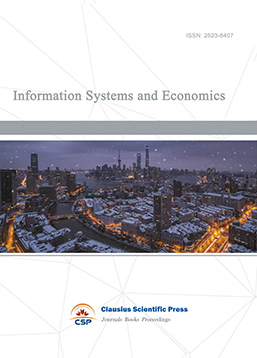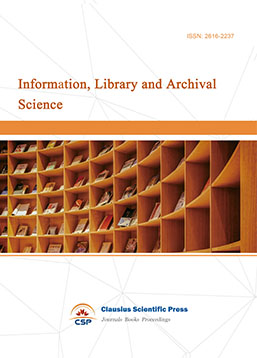Research on the Talent Training Mode Collaborative Innovation of Interior Design Professionals in Architectural Decoration Industry
DOI: 10.23977/jhrd.2024.060319 | Downloads: 12 | Views: 701
Author(s)
Qiang Shi 1, Xiuzi Chen 1, Weiwei Qin 1, Yuhan Ding 1
Affiliation(s)
1 College of Art, Shanwei Institute of Technology, Shanwei, Guangdong, China
Corresponding Author
Qiang ShiABSTRACT
This paper aims at improving the quality of talent training, focuses on the construction of practical training base, teacher team and teaching resource base, and explores the training mode, methods and practice of upgrading interior design professionals in the architectural decoration industry. The cooperation between school and enterprise will be comprehensively deepened, the deep sharing of resources among all parties will be realized, through the deep integration of industry and education. The "resource sharing" mechanism with regional industrial collaborative innovation and development will be formed, and the training quality of interior design professionals will be improved. This paper puts forward to build "power industry innovation and development, service regional economic development" of professional group construction principle, across professional technology research and development projects as the carrier of professional development, through the teaching depth fusion, comprehensively deepen colleges cooperation, realize the resource sharing, the formation of professional group and regional industrial economy collaborative innovation development of "production fusion, resource sharing" mechanism, improve professional group and regional industrial transformation and upgrading of collaborative innovation development ability.
KEYWORDS
Building Decoration Industry; Interior Design; Integration of Industry and Education; Talent Training ModeCITE THIS PAPER
Qiang Shi, Xiuzi Chen, Weiwei Qin, Yuhan Ding, Research on the Talent Training Mode Collaborative Innovation of Interior Design Professionals in Architectural Decoration Industry. Journal of Human Resource Development (2024) Vol. 6: 120-125. DOI: http://dx.doi.org/10.23977/jhrd.2024.060319.
REFERENCES
[1] Jiang Shuzhuo, Zheng Huanzhao. Connotation construction of new Lingnan Culture and Guangdong cultural industry [J]. Seek, 2014, (1):69-76.
[2] The Guangdong Provincial Construction Industry Association. Problems and suggestions on the industrialization of architectural decoration in Guangdong province [J]. Building, 2015, (10):36-39.
[3] Zhao Yajun. Study on the training mode of school-enterprise cooperative architectural decoration professionals based on industry demand [J]. Modern Decoration (Theory), 2013, (6):256.
[4] Huang Lincheng. Exploration of the docking mode between architectural decoration majors and regional industries in the Pearl River Delta region [J]. Journal of Wuhan Engineering Vocational and Technical College, 2016, (1): 101-103.
[5] Song Jinjun, Liu Fentao, et al. Practice and exploration of "321" teaching mode in higher vocational colleges [J]. Vocational and technical education in China, 2012, (2):32-33.
[6] Yu Zeng, Zhang Pengfei, Dong Yan. Practical research on industry-university-research cooperation mode based on "teaching factory" [J]. The Vocational Education Forum, 2012, (12):18-20.
[7] Liu Shuting, Ma Yongliang. Practice and exploration of "PSP two-way feedback" talent training mode in higher vocational colleges—Take the building decoration engineering technology major as an example [J]. Journal of Wenzhou Vocational and Technical College, 2013, (2):28-31.
[8] Xiao Wenting. On the interactive development of digital media professional talent training and regional industry in Guangdong from the demand of vocational post ability [J]. Education and occupation, 2015,(32):87-89.
[9] Huang Lincheng. Research on the curriculum setting of Architectural Decoration major under the background of regional industry demand [J]. Journal of Guangdong Communications Vocational and Technical College, 2016, (1):67-70.
[10] Zhang Chengyao. Application and Practice of Learning Effectiveness Pyramid Theory in Information Technology Classroom in Primary and Secondary Schools [J]. Audio-visual education in China, 2013,(10):125-127.
[11] Wu Rong. Construction of curriculum system of higher Vocational decorative Art Design major based on CDIO concept [J]. Chinese adult education, 2015,(3):145-146.
| Downloads: | 7549 |
|---|---|
| Visits: | 219159 |
Sponsors, Associates, and Links
-
Information Systems and Economics

-
Accounting, Auditing and Finance

-
Industrial Engineering and Innovation Management

-
Tourism Management and Technology Economy

-
Journal of Computational and Financial Econometrics

-
Financial Engineering and Risk Management

-
Accounting and Corporate Management

-
Social Security and Administration Management

-
Population, Resources & Environmental Economics

-
Statistics & Quantitative Economics

-
Agricultural & Forestry Economics and Management

-
Social Medicine and Health Management

-
Land Resource Management

-
Information, Library and Archival Science

-
Manufacturing and Service Operations Management

-
Operational Research and Cybernetics


 Download as PDF
Download as PDF